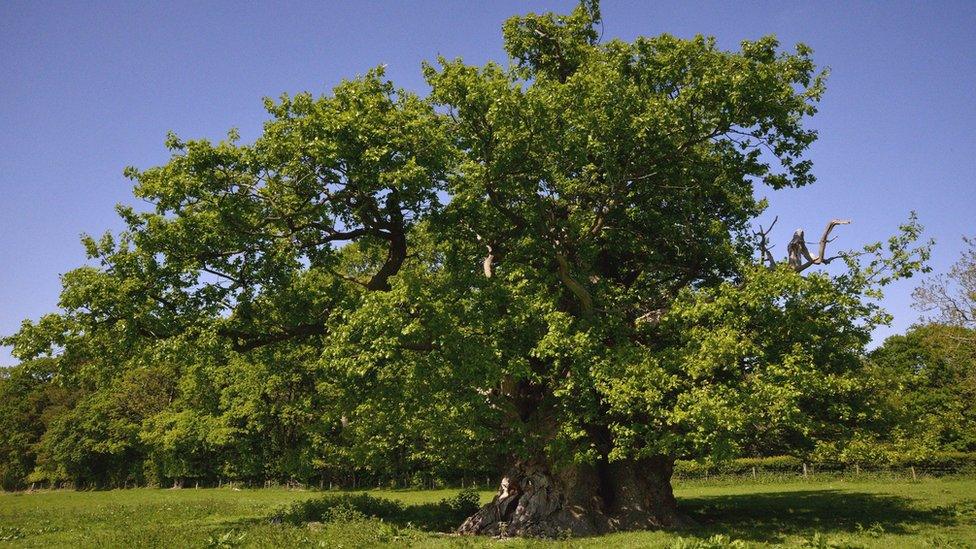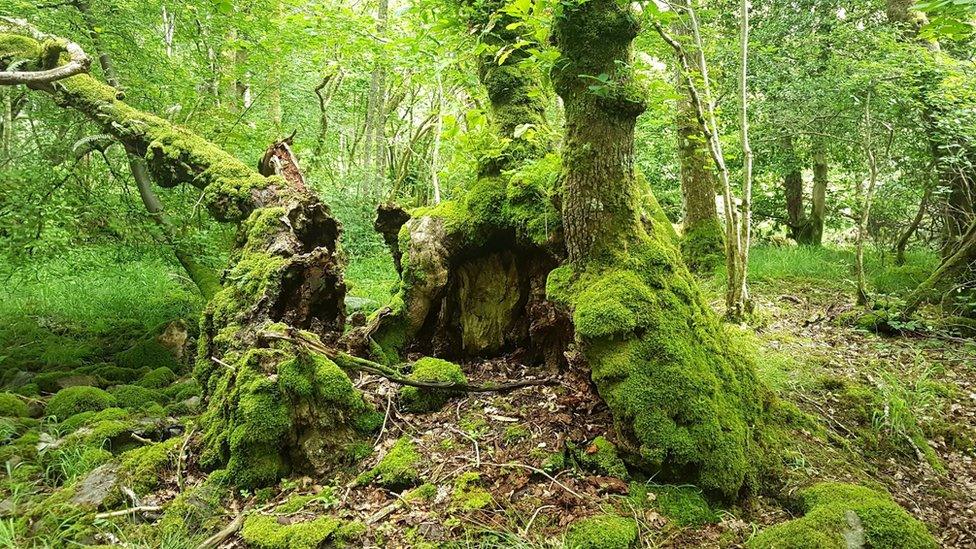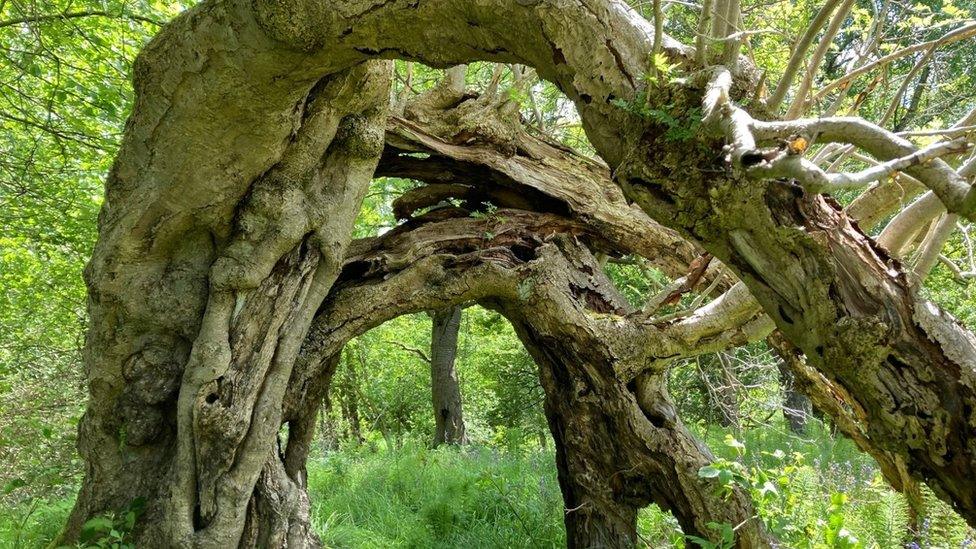Tree of the Year: Ancient oaks part of shortlist for Woodland Trust competition
- Published
- comments

The Waverley Abbey Yew, Farnham, Surrey, is one of the 12 shortlisted trees in the Woodland Trust's Tree of the Year competition
Five huge oaks and a rowan that is arched like a 'portal into another world' are just some of the trees in the running for Tree of the Year.
The Woodland Trust has announced 12 trees that make up the shortlist for their Tree of the Year contest and now people will be able to vote for their favourite.
The shortlist was chosen by a panel of experts from the charity's list of very old and important trees, the Ancient Tree Inventory (ATI).
The public can now vote for their favourite tree to win the Tree of the Year competition for 2022, with the winner competing for the UK in the European Tree of the Year contest next year.
Find out more about the trees and try our tree quiz below!
What are ancient trees?

The Escley Oak in Herefordshire is at least 400 years old!
This year, the Woodland Trust is using the competition to highlight the importance of rare ancient and veteran trees.
The Woodland Trust say an ancient tree is any tree in the 'third' or 'last stage' of life and older than other trees of the same species.
It says some trees in England could be approaching 1000 years old!
The charity is calling for legal protection for these ancient trees which it says are hugely important for wildlife.
It wants the government to give them heritage status to recognise their "historical and cultural significance".
Woodland Trust head of campaigning Adam Cormack said: "We believe that now is the time to give these living legends the legal status they deserve.
"We all want to be able help to protect these wonderful old trees for centuries to come."
What trees are in the shortlist?

The Burnbanks Oak in Haweswater, Cumbria provides a home for wildlife
There are 12 trees in the shortlist:
The Escley Oak, Herefordshire, thought to be at least 400-500 years old, stands alone in a meadow and looks like two separate trees grown together due to the large hollow in its trunk.
The Flitton Oak, in Devon, which is around 700 years old, has eight enormous limbs dripping with moss and lichen, and has a rescue plan to stop it being smothered by younger trees.
Holly on the Hill, Hawnby, north Yorkshire, has a trunk that is a collection of stems that have fused and grown together. It could have been there since the late 19th century.
The Burnbanks Oak, Haweswater, Cumbria, is growing in a pocket of ancient woodland, and has a completely hollow centre with its trunk housing lichens, ferns and mosses and providing shelter for wildlife.
Hedgerow Hawthorn, Colton, Cumbria, forms part of a small line of hawthorns that mark the site of a former land boundary, and is likely to be between 170 and 200 years old.
The '12 Apostles' Lime, Chipping Camden, Gloucestershire, is the largest of an avenue of 12 limes planted at St James Churchyard to represent the 12 apostles. Believed to be one of the original trees planted around 1770.
Kilbroney Oak, Kilbroney Park, County Down, Northern Ireland, is believed to have been the inspiration for the fantasy world in CS Lewis's Chronicles of Narnia. It is believed to be more than 300 years old.

The Portal Tree in Loanhead, Midlothian is bent into and arch
The Portal Tree, Loanhead, Midlothian, Scotland is a rowan - which feature heavily in folklore - and has bent over to form a full archway, suggesting a portal to another world.
The Rolls of Monmouth Oak, Monmouthshire, Wales, is the largest on the Great Oaks golf course on the Rolls of Monmouth Estate, and provides an important haven for wildlife and is likely to be more than 500 years old.
Langley Park Chestnut, Langley Park House, Scotland, is thought to be as old - or much older - than the original 18th century Langley Park House in whose grounds it grows. It has a girth of 7.81 metres and huge branches which grow around the main trunk like a fallen crown.
Layering Horse Chestnut, Kedleston, Derbyshire, is a tree whose original trunk is hollowing and decaying, while the branches have fallen to its sides, where roots have sprouted, anchoring them to the ground and allowing a new lease of life as they grow.
Waverley Abbey Yew, Farnham, Surrey, whose roots grow into and around the ruins of the abbey. Its age is unknown but cannot be more than 480 years old.
If you cannot see the quiz, click here.
- Published5 July 2022

